In Use
I took several trips over to Filoli Gardens,
here in Redwood City, which is a photographer's paradise (Filoli has been
used as a setting in numerous movies). I used the 15mm-30mm lens for the
color shots, and Program mode, with Auto White Balance, ISO 100, and the
maximum JPEG resolution setting and file size. Focusing was done manually.
All of the color photos are shown without any manipulation other than
reduction in size to fit on these pages.
Here is Foxglove in shadow, with the
background in the sunlight. The stems of the flowers, although dark, are
still detailed, and the sky is not over-exposed.
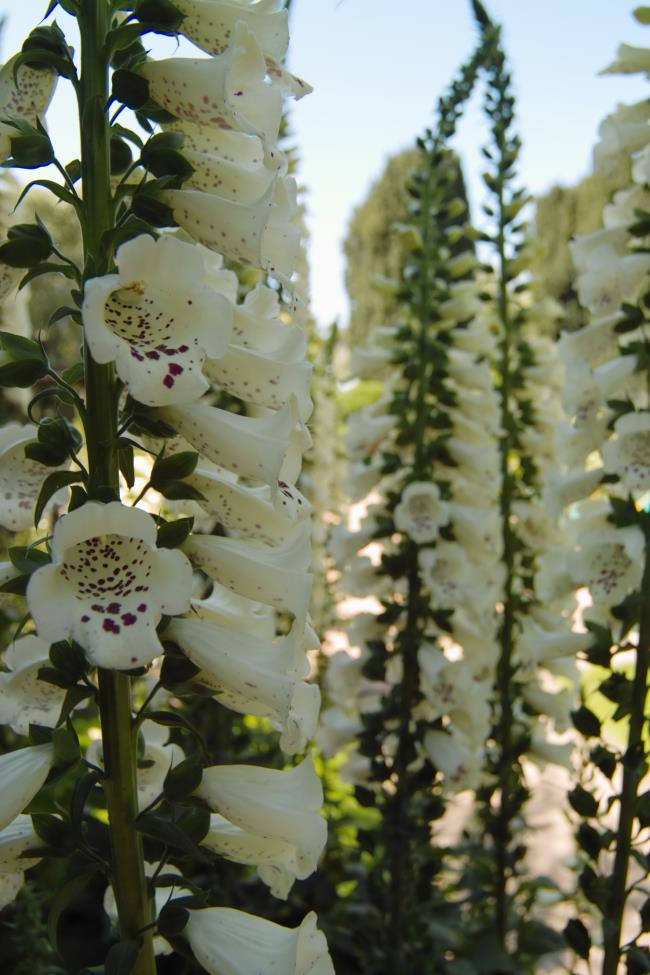
Now here is the same subject, but taken with
the built-in flash. The Foxglove is beautifully lighted, and the sky is
still properly exposed. The green Poplar tree in the background is also
exposed the same as in the photo without flash.

The patio area (below) has some strong
contrast between the shadowed tables under the tree, and the background in
full sun. This type of photo is very difficult for digital cameras, because
the final photo is stored as a JPEG, which has limited dynamic range. This
is why I would recommend using the RAW mode all the time, because even
though the file size is much larger, the dynamic range is higher, and CF
cards of several GB in size are very inexpensive now.
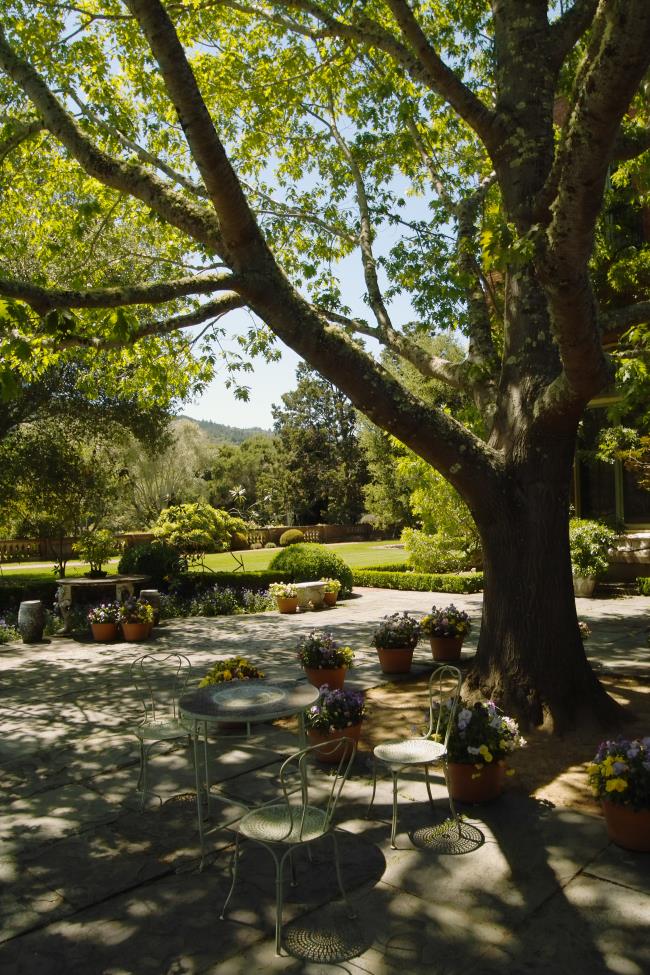
Red flowers are another tough subject for
digital sensors, as they usually tend to be over-saturated. Below, the roses
in the sun do appear over-saturated, but the ones in the shadows are about
right. Therefore, this type of scene should probably be exposed at about 1.5
f/stops less than the metered exposure. This is done with one of the buttons
on the back of the camera that let you adjust metered exposure by
± 3 f/stops.

Yellow - yet again tough on digital sensors -
was rendered beautifully here with these California Poppies, using the metered exposure.
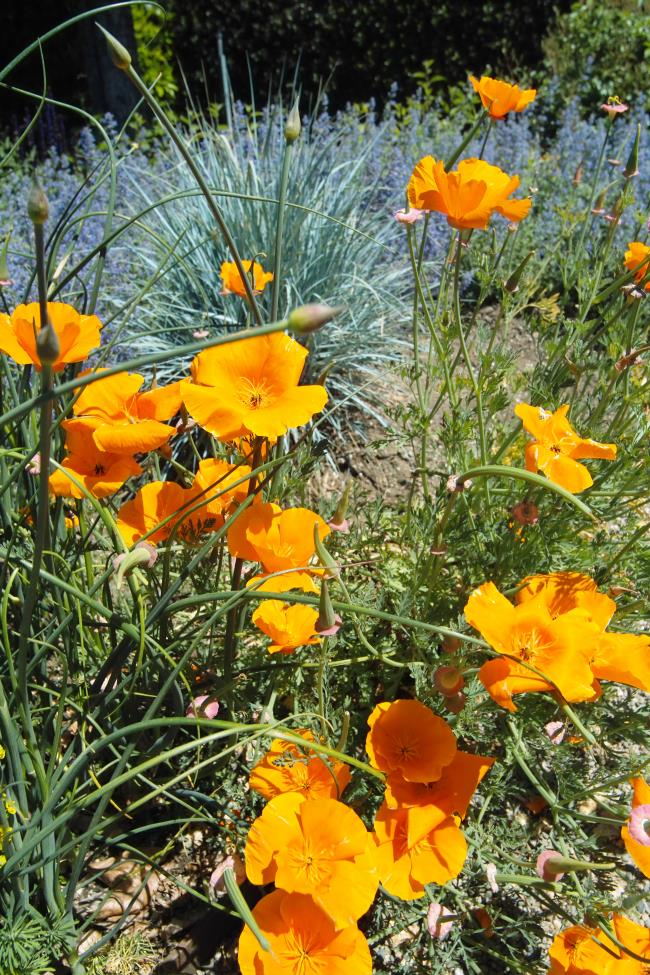
This is why I like extreme wide angle lenses.
I can kneel down and get a very dramatic view of subjects like these blue
and white Salvias. Only
the extreme foreground was slightly out of focus (that part was about a foot
away from the lens). Even at a small f/stop, there are limitations to the
depth of field when you are this close to the subject.
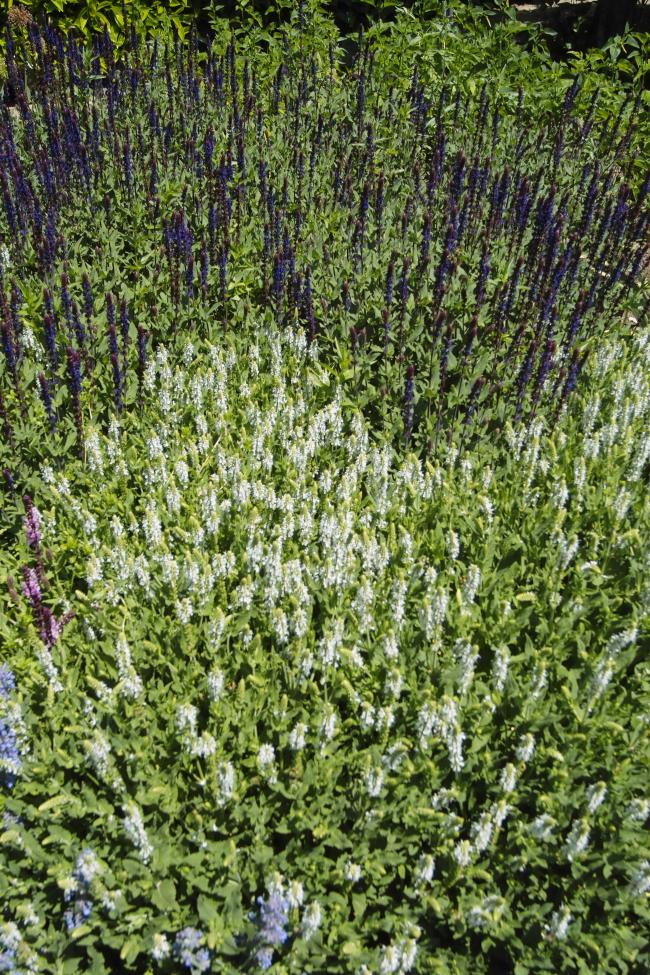
These pink roses were perfect. No
over-saturation that I could see. It just seems to be a problem with red that digital
cameras have.
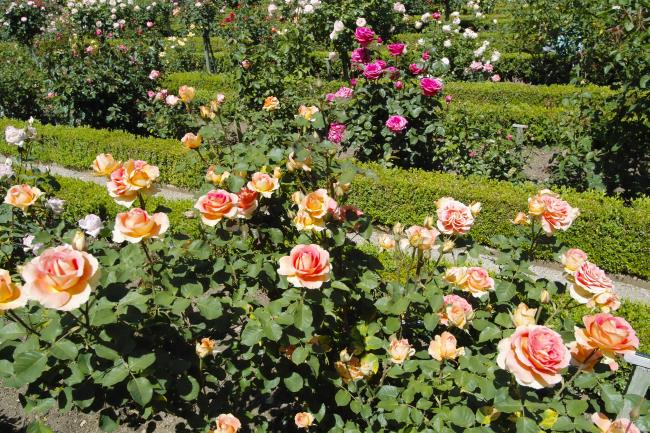
The Safeway vegetable rack - one
of my standard test shots - shows that the SD14 tended to underexpose it a
bit. Usually, I get some over-exposed highlights on the yellow peppers, but
not with this camera. This is reasonably easy to fix in Photoshop or other
photo editors (I like PhotoImpact), but it is better to give a subject like this about one f/stop
more than the metered exposure, and/or shoot in RAW mode, which gives you
more latitude in the photo editor stages.
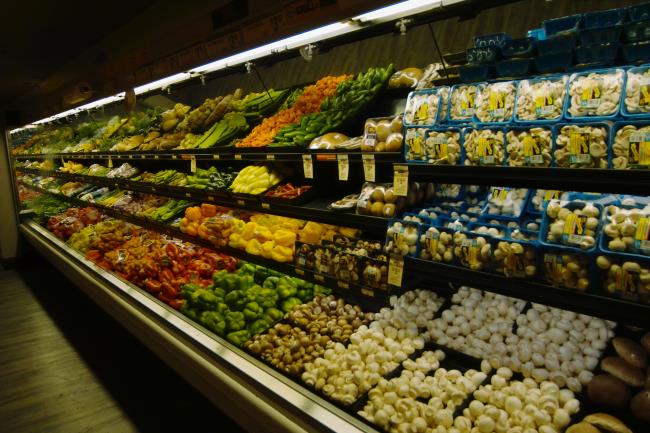
Here is the same scene, shot in
RAW, then processed with Adobe Lightroom 1.0 software so that it appears close
to the way it looks to my eyes when I am standing there.

The 50mm lens is no slouch
either. Here is a close-up photo of Lincoln on a $5 bill to show you why it
is called a "Macro" lens.

Go to Part IV.